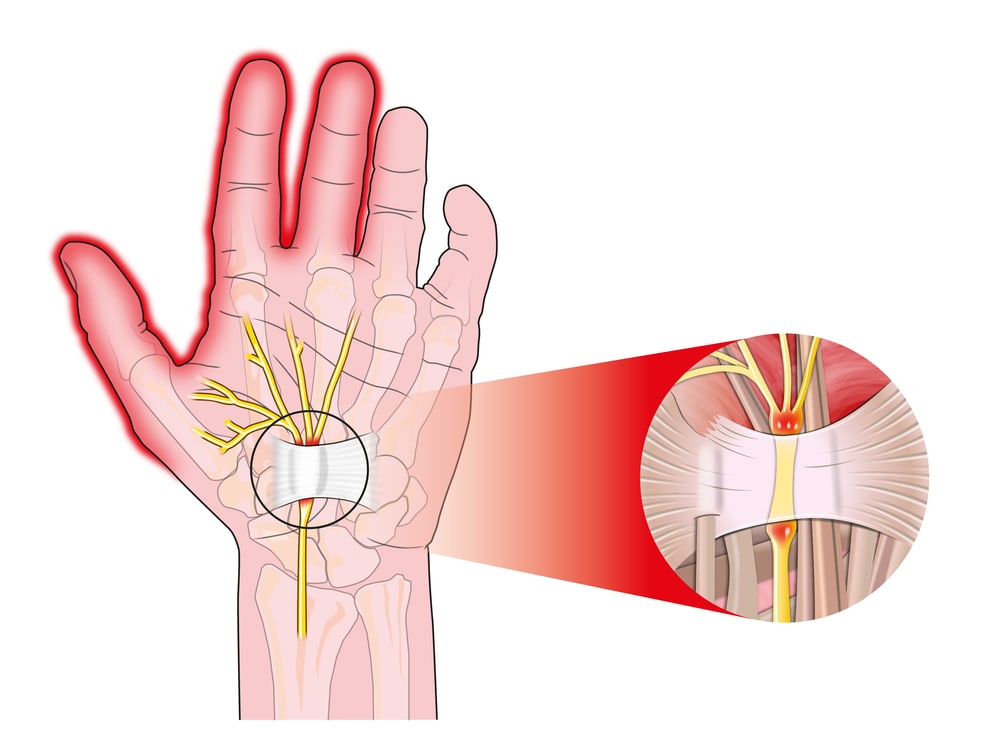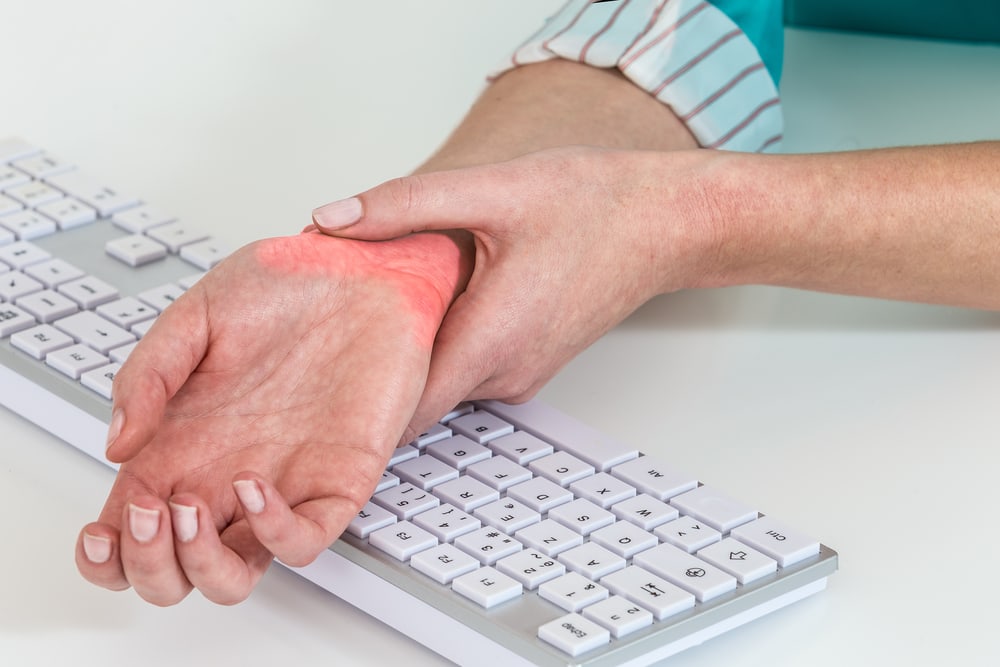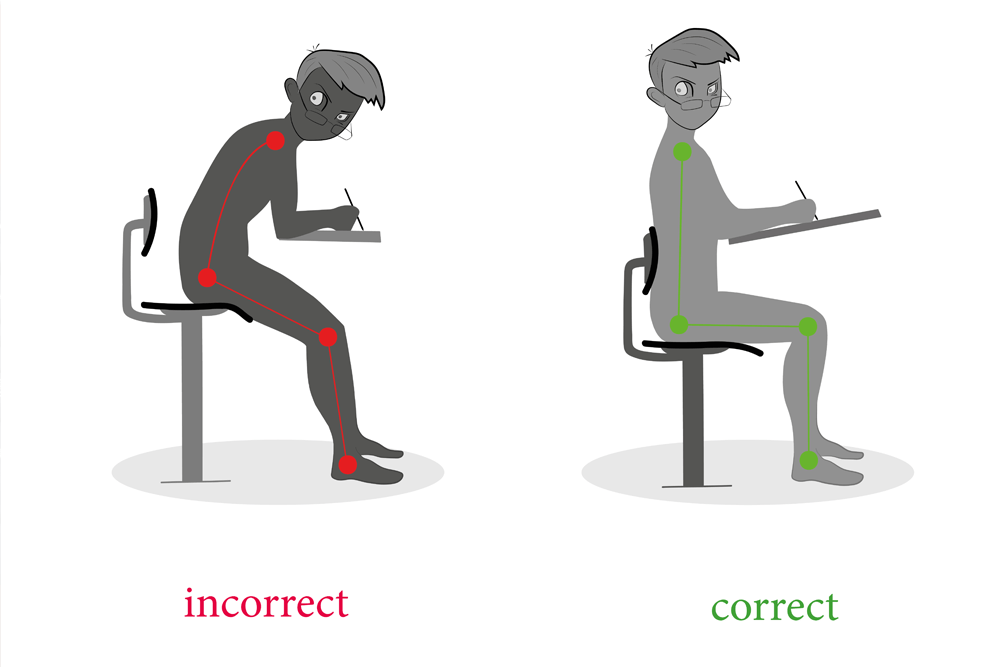
By now, almost everyone knows that office jobs can have a negative impact on one’s body. The increasingly sedentary lifestyle leads to a stronger chance for heart disease, obesity, and other negative conditions. While factory employees and skilled laborers are at the highest risk for carpal tunnel syndrome, office employees are also predisposed to this condition. And, with a Westbury hand surgeon on staff, we consider ourselves to be quite the experts on the topic. In this post, we’ll discuss how you can convert your office to prevent employees from developing carpal tunnel syndrome.
What is Carpal Tunnel Syndrome?
Carpal tunnel syndrome is a condition that primarily arises from repetitive motions made with the wrist. Repetition of these motions causes immense pressure on the median nerve, and can consequently cause a numb, tingling and weak feeling.
What Causes Carpal Tunnel Syndrome?
Actions that require carefully nuanced finger motions are often the ones that lead to carpal tunnel syndrome. So, placing objects on and lifting objects off conveyor belts makes an assembly line worker likely to have carpal tunnel syndrome. Other common examples include:
- Grasping fabric in garment production
- Gripping and turning a screwdriver
- Manually weeding
- Knitting
- Cutting meat
And of course, the focus of this article– typing on a keyboard. Wondering if your occupation may lead to carpal tunnel syndrome? Ask one of our Westbury hand surgeons.

What are the Symptoms of Carpal Tunnel Syndrome?
Oftentimes, carpal tunnel syndrome begins as a tingling feeling in the areas of the hand affected by the median nerve– the thumb, pointer, and middle finger. This develops into a dull pain in the hand. Eventually, people with carpal tunnel syndrome will begin to feel as if their hands are asleep.
Without the proper treatment, and regardless of the severity, carpal tunnel syndrome can affect other areas of the body. Eventually, it can reach the arms, or even the shoulders.
6 Ways to Prevent Carpal Tunnel Syndrome
1. Rest
Though it may impact your productivity or employer relationship, refraining from using your hands will give them the rest they need to heal properly. This is a great way to manage the condition.
2. Exercise
Throughout the workday, take the time to perform basic stretches and exercises. The simplest exercises can be shaking out your wrists. Yoga is also a common tactic, and has miraculous effects on the flexibility of the body as a whole.

3. Customize Your Workplace
When you’re at risk for or currently suffering from carpal tunnel syndrome, every choice counts. Place your computer directly in front of you, at eye level. Adjust your chair so that your forearms are even with the keyboard.
Using the proper equipment can limit the extent of the damage, too. A keyboard pad will raise your hands, so that they are not at the incorrect angle. Ergonomic keyboards will allow people to keep their hands in a more natural position. Finally, a vertical mouse helps you to keep your thumb oriented in the natural position. Our Westbury hand surgeons can make recommendations for better workplace accommodations.
4. Maintain Proper Posture
Slouching can have a terrible impact on your back. When your wrists aren’t straight, however, it can also slouching can also increase the chances of carpal tunnel syndrome. To avoid this, sit with your feet planted, your head looking forward, and your wrists straight.

5. Use a Wrist Splint
Not confident that you have the willpower to keep your wrists straight throughout the day? A wrist splint can enforce this postural change so that they are always straight. Try this at night, too.
6. Consider Therapy
Whether you opt for massages, or ice therapy, any therapeutic technique will help mitigate pain.

Surgical Treatments for Carpal Tunnel Syndrome
Sometimes, these mitigation techniques are not enough to eliminate pain altogether. Qualified hand surgeon can help patients to overcome this pain by administering a few different procedures. In addition to administering cortisol shots, our Westbury hand surgeons perform two different procedures.
Open Release
After making a small, inch-long incision, the surgeon will take pressure off of the median nerve by cutting the transverse carpal ligament. Then, the surgeon will stitch the skin together, and the wound will fill with scar tissue.
Endoscopic Release
Instead of making a long incision, the surgeon will make an incision that is just wide enough for a fiber optic camera. Then, the surgeon carefully cuts the transverse carpal ligament. This procedure leaves the skin undisturbed.
Choose Westbury Hand Surgeons at Central Orthopedic
Tired of this consistent strain? Contact our office to make an appointment with a Westbury hand surgeon. We perform both open and endoscopic release procedures, depending on the condition of each patient.
